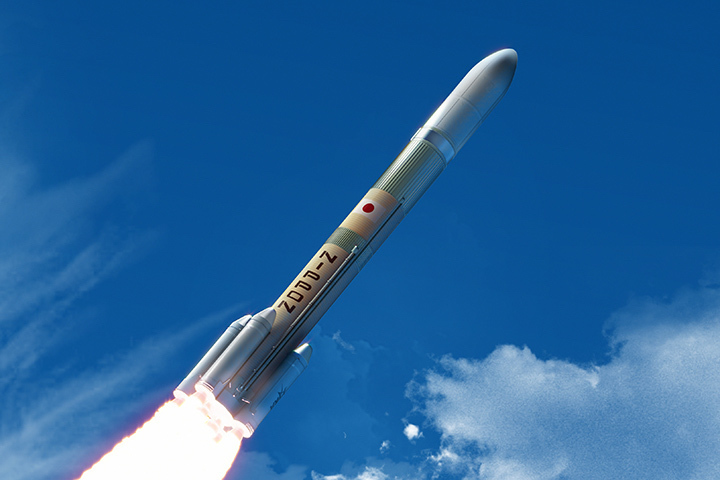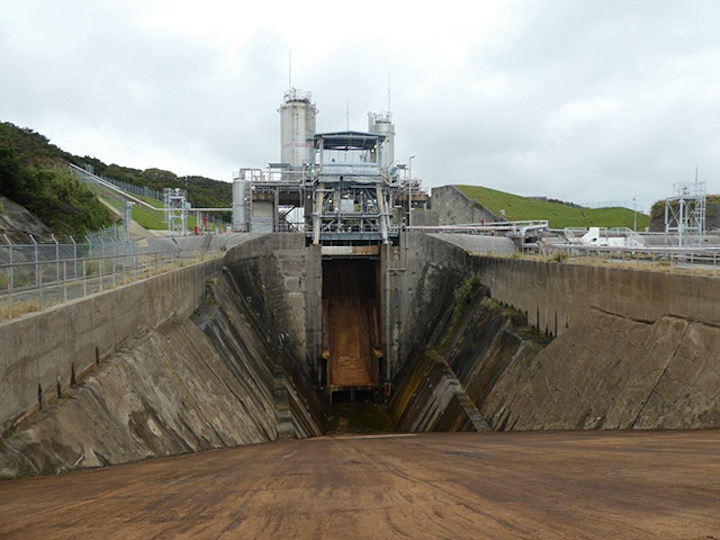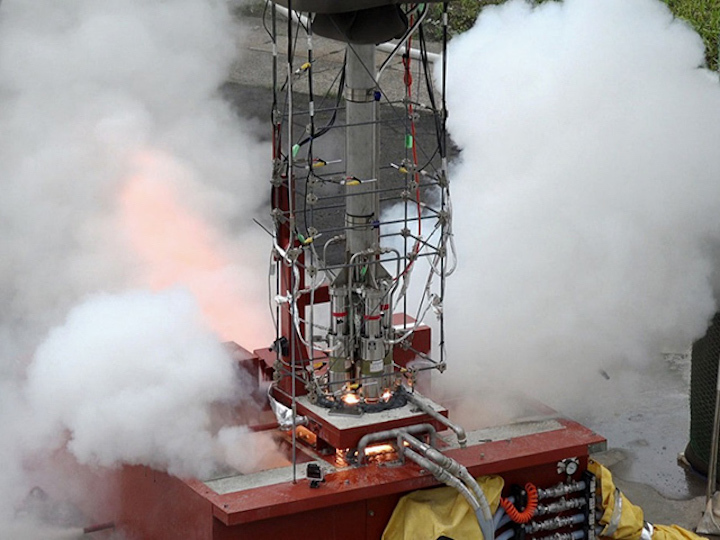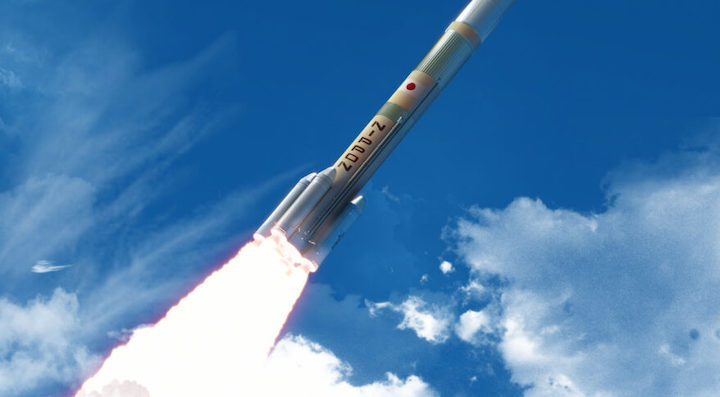12.09.2020

September 11, 2020 (JST)
National Research & Development Agency
Japan Aerospace Exploration Agency (JAXA)
The Japan Aerospace Exploration Agency (JAXA) has been pressing forward with the development of the H3 Launch Vehicle. In the process, a technical problem was identified regarding the LE-9 first-stage engine, which is a new engine now under development. In order to address the problem in an appropriate manner, JAXA has decided to postpone the launch of the first test flight from the Japanese fiscal year (JFY) 2020 to JFY 2021 and that of the second test flight from JFY 2021 to JFY 2022.
JAXA will deal with the LE-9 engine-related problem in an appropriate manner and make an all-out effort for the successful launch of the H3 as a new Japan’s mainstay rocket.
Quelle: JAXA
+++
About H3 Launch Vehicle
The H3 Launch Vehicle is Japan's new flagship rocket aiming at achieving high flexibility, high reliability, and high cost performance. Its maiden flight is set for JFY 2020. H3 will offer several lineups by selection of two types of fairings, two or three first-stage engines (LE-9), and zero, two or four solid rocket boosters (SRB-3) to deal with various payload sizes and orbits. Its launch capability to the geostationary transfer orbit (GTO) will be the highest ever, exceeding that of the existing H-IIA and H-IIB Launch Vehicles.
H3 is under development to be a successor to H-IIA and H-IIB so that Japan can maintain its autonomous access to space to launch satellites and probes including important missions for the government. We are eager to launch commercial satellites every year as well.
JAXA and its prime contractor, Mitsubishi Heavy Industries (MHI), and other related companies are all hands on deck from the development phase to leverage their experiences to renovate the whole system for producing a low cost, flexible and reliable rocket.
Quelle: JAXA
+++
LE-9 Engine Assembled for Testing Shown to the Media

On November 14, 2017, JAXA invited to the JAXA Tanegashima Space Center (TNSC) the member of the media to see the LE-9 engine assembled for tests. The rain at the site hardly detracted many from around the country to look at the LE-9 model installed in the TNSC firing test chamber.
LE-9 is the liquid rocket engine designed to propel the first stage of H3 Launch Vehicle now under development. From April to July, a series of engine firing testing was conducted on the first LE-9 test engine (Test model#1) primarily to confirm the sequence of activate/deactivate commands and to gain performance data. The second LE-9 test engine (Test model#2) was made public to the press. After the data from the test series is being reviewed and objectives met, the next series of tests on Test model#2 will get readied to start.
Quelle: JAXA
+++
H3 Scaled Acoustic Reduction Experiments
During launch, a rocket makes huge noise equivalent to hundred large passenger jet engines. The acoustic energy can cause damage to its payload as well as the rocket itself. To minimize it, H3 that JAXA is now developing seeks to achieve the world’s quietest launch. As part of the noise reduction program, HARE (H3 Scaled Acoustic Reduction Experiment) was carried out from April to July, at the JAXA Noshiro Rocket Test Center, Akita. The water system is designed to protect the Shuttle and its payloads from any damage that may occur from acoustical energy reflected from the Mobile Launcher Platform (MLP) during launch.
The countermeasures have mainly evolved around simple noise testing and numerical noise analysis. Based on these, installment of the devises has been made at the ground facility including water suppression system and sound absorbing walls. The acoustic tests on a 1:24 scale model of H3 and launch system provided critical data about how the powerful noise generated by the engines and boosters. The data also elucidated the transient pressure rate at the ignition of the solid motor. Analysis of the data will give JAXA deeper understanding of the mechanism of noise generation during liftoff. Application of the HARE data, along with other acoustic data collected at H-IIA and B launches will be used for the design and development of H3 and the ground facility.

Quelle: JAXA
----
Update: 28.11.2020
.
Japan’s new H3 launcher delayed by rocket engine component issues

HELSINKI — The first launches of the new Japanese H3 launch vehicle are being delayed by issues with two components of the rocket’s main engine, the country’s space agency confirms.
The Japanese space agency JAXA told SpaceNews that problems were found with the new LE-9 engine’s combustion chamber and turbopump.
“Fatigue fracture surfaces were confirmed in the apertural area of the combustion chamber inner wall and the FTP blade of the turbo pump,” according to a JAXA spokesperson.
JAXA and Mitsubishi Heavy Industries (MHI), the prime contractor for the H3, were aiming to hold the inaugural launch by the end of 2020 before the discovery of issues in May.
However engineers testing the LE-9 cryogenic liquid hydrogen and liquid oxygen engine for the H3 first stage encountered a potential issue back in May.
This led JAXA to announce in September that the first flight would slip to some time in Japanese fiscal year 2021, beginning April 1, 2021. The rocket’s second launch likewise slipped to Japanese fiscal year 2022.
JAXA conducted tests to isolate the cause of the combustion chamber issue and are moving ahead with remedies. “Cooling for the chamber will be strengthened and the combustion sequence will be reexamined according to the test results.”
The issue with the turbopump is presumed to be caused by resonance, or when engine vibrations match the resonant frequency of the rocket’s structure. Damage suffered by the blades requires a redesign.
“We will redesign the turbine to exclude all structural eigenvalues that can resonate, from all operating range, and the effect will be confirmed by blade vibration tests,” JAXA said.
H3 is the successor to the current H-II rockets. H3 is designed to be less expensive and more competitive on the global commercial launch market. According to Japan’s Space Basic Plan published by the Cabinet Office the H3 will completely replace the older H-IIA and H-IIB rockets after 2023.
Four configurations of the H3 are to be possible, each featuring two or three LE-9 engines. The largest, 63-meter, 574-ton configuration, is to be capable of lifting more than 7,900 kilograms to geosynchronous transfer orbit.
Upgraded variants may be introduced in the future for lunar missions.
MHI are confident despite the delay that the H3—stated to be designed for high flexibility, high reliability, and high cost performance—will find its place in the launch market,
“With the consecutive successes of H-IIA and H-IIB launches, we see the rising degree of recognition for Japan’s launch vehicles, including the expectation for H3, in the global market,” Mitsuhiko Ikeya of Mitsubishi Heavy Industries’ Global Communications Group told SpaceNews in an email.
Inmarsat is to be the first commercial customer for the H3 with a contract signed in December 2018.
“We will keep maintaining and enhancing the good relationships between each potential customer,” Ikeya added. MHI refrained from specifying pricing for the H3 launcher.
Quelle: SN
